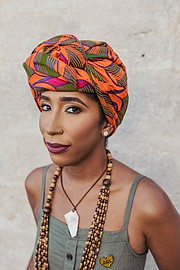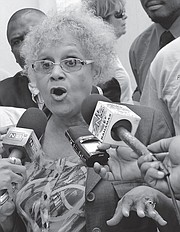ON Monday, it was reported that 30 percent of sexual offence cases were dropped, largely due to the long wait time for trials. Director of Public Prosecutions Garvin Gaskin said: “We’ve had experiences where persons have said just that, ‘I’ve moved on. I’m not going to relive that. I’m now married and my husband doesn’t even know about it’.”
There are experiences survivors of sexual violence have that few people ever come to know, much less think about. We know the rate of sexual violence in The Bahamas is high, and we know the court system is flawed and slow. It is not difficult to understand that access to justice through the law enforcement and the judicial system is not a given. It is unjust for a survivor, who reports sexual violence — a terrible, traumatic process — to have to wait for years for a court date and wonder if it will ever come up and, if it does, what the outcome would be.
Dr Sandra Dean-Patterson, Director of Bahamas Crisis Centre, shared that only one in four victims reports to the police. This is due to various factors including stigma, fear and shame. Many people do not want to go through the process.
Anyone who has ever reported anything to the police knows how difficult and frustrating it tends to be. There is often telling and retelling, answering the same questions multiple times, seeing errors in the handwritten reports and waiting for them to be rewritten, being asked what you did to cause the incident, being ridiculed for not doing something differently and being too exhausted to complete the process are not uncommon experiences.
Just as damaging is rape culture which attempts to normalise and excuse rape. Rape is not normal and it is inexcusable. Still, rape culture is perpetuated through pop culture, institutions and people in positions of power. The objectification of women, misogynistic language, patriarchal systems and toxic masculinity (not to be confused with masculinity) contribute to it.
Earlier this week, I was on a radio talk show, talking about gender-based violence and the issue of victim blaming was raised. A listener called in to say we can say women can wear whatever they want, but people don’t go around flashing their money or valuables around. That may, at first, seem like a good analogy, but it has a critical flaw. It suggests women are objects. It equates the theft of an item to sexual violation. We know this is not true, right? Women are human beings with human rights.
Over and over again, we explain that no one causes their own rape. Clothing does not make a difference. The suggestion that women attract rapists makes clear the lack of knowledge about sexual violence. First, we need to understand rape is not sex. Rape is a violation. Sex is consensual. Rape is about power and control, not sex. This alone obliterates arguments about women’s “responsibility” to protect themselves.
The rape prevention tips, for years, have included dressing modestly, not going out at night and not travelling alone. They make the women’s world small. They demand women make themselves invisible and put a man — usually a father, brother, or partner — in charge of their protection. A woman’s safety becomes dependent on a man who can claim her, alerting other men that she is not an available target due to her proximity to him. We talk, at length, about the effects of patriarchy and the (de)valuation of women. For now, let us be clear that women should not need protection and women should not need to moderate their very presence, at all times, to avoid rape. The threat of rape should not be consistent, but it is, and not because of anything women are doing.
These days, “prevention” is big business. Companies come up with all kinds of products to sell to women, and the well-meaning people who love and want to protect them, to reduce the chance they will be raped. One of them, very widely promoted in recent years, is the nail polish that detects date rape drugs in drinks. Women, then, are expected to paint their nails with this particular nail polish, and stick their fingers into their drinks to test for drugs that may have been put in without them noticing.
More and more, people and companies are finding ways to make women responsible for prevention. They want women to pay for this protection. Take a self-defence class. Buy this nail polish. Get this belt that can only be removed by engaging this secret mechanism. Pay for a taxi. Maybe some of these are helpful to individuals at times, but they do nothing to address the problem. The problem is rapists. The problem is rape culture. The problem is the well-meaning people who still do not understand that there is nothing anyone can do to cause their own rape. Consent is a requirement for sex and there are no exceptions.
By now, we should all know rape is most often perpetrated by people known to the victims. Date rape is not often discussed, but it is prevalent. Because it is not usually a part of the conversation, people are not aware that it takes place. Many people only realize decades later that they were sexually assaulted or raped because the perpetrator was known to them. They did not know that their “no” was enough, or that never saying “yes” and expressing their discomfort should have stopped the person. They did not know the person with significant power over them manipulated them at a time when they could not legally consent to sexual activity. They did not know. Many may never know, but some find out many years later and have to figure out how to deal with that information.
Victim blaming has to end and we need a separate court for sexual offences in order to get more people to report. We need to educate people on the full spectrum of sexual violence, from sexual harassment to rape, and ensure everyone knows the difference, not only between rape and sex, but also between a violation and a welcome, agreed upon interaction.
To increase reporting, we need survivor-centred systems. The trauma of sexual assault has to be acknowledged and that needs to inform the development of appropriate mechanisms.
How can reporting be made easier? How can survivors be provided with resources and services quickly and without multiple engagements? What must justice look like? What do survivors need and what would support their healing?
We need to start with the people law enforcement, the judicial system and support services are meant to serve. They know what they need and they deserve to be consulted and regarded as experts in their own lives. This, alongside critical legislation and policies such as the Strategic Plan to Address Gender-based Violence can help us to improve reporting which will result in more accurate statistics. This, combined with qualitative data, can help guide prevention efforts which must include comprehensive sexuality education.
We cannot run away from it and expect to end sexual violence. It cannot be a secret, it cannot be unspoken and it cannot be left for experimentation and on-the-go learning. Fostering healthy sexual relationships and ending sexual violence depend on education, law and policy. We cannot delay.
RECOMMENDATIONS
1. Harlem. The television show follows a friend group of four women in their 30s who met at New York University. They try to balance their work lives and career ambitions with love lives and everything else. It is funny and relatable. Camille, played by Meagan Good, is the anchor of the show and most viewers likely cannot help but feel her anxiety as she yearns to move up from her position as an adjunct professor at Columbia University. Her friend Quinn is a designer who depends on her parents’ cheques to keep her store open, Angie wants to do nothing but sing and has not yet recovered from losing a record deal, and Tye runs a successful tech company. They each have a distinct style, a persisting challenge and a place they want to be in life. Again, it is easy to relate.
2. Beach Too Sandy, Water Too Wet. This is a podcast that just might make you truly laugh out loud. Siblings Xandy and Christine read terrible reviews in a dramatic fashion with very appropriate music playing in the background. Yes, there is at least one review of a beach that was simply too sandy for the reviewer. While most of the reviews are ridiculous, they always find “redemptions” which are five-star reviews that are interesting in their own way, whether heartwarming or funny. The themes include tanning salons, antique stores, ice cream parlours, islands, wineries and arcades. Episodes can be listened to in any order.
3. It’s Okay to Laugh: (Crying is Cool Too) by Nora McInerny Purmort. This book, like Nora’s podcast — Terrible, Thanks for Asking — is about grief. Nora is not one for pity parties, so this book is not about wallowing, but isn’t about making light of everything either. In it, Nora tells stories from her own life, all connected to grief and loss, especially of her father and husband who died within weeks.
Even given the subject matter, it is an easy read and one that can be taken in small doses if needed. She definitely has a sense of humour, and her late husband wouldn’t mind her laughing her way through grief. She and Aaron wrote his obituary together while Aaron was in hospice, and it said he “died peacefully at home on November 25 after complications from a radioactive spider bite that led to years of crime-fighting and a years long battle with a nefarious criminal,” and revealed him to be Spiderman.







Comments
Use the comment form below to begin a discussion about this content.
Sign in to comment
Or login with:
OpenID